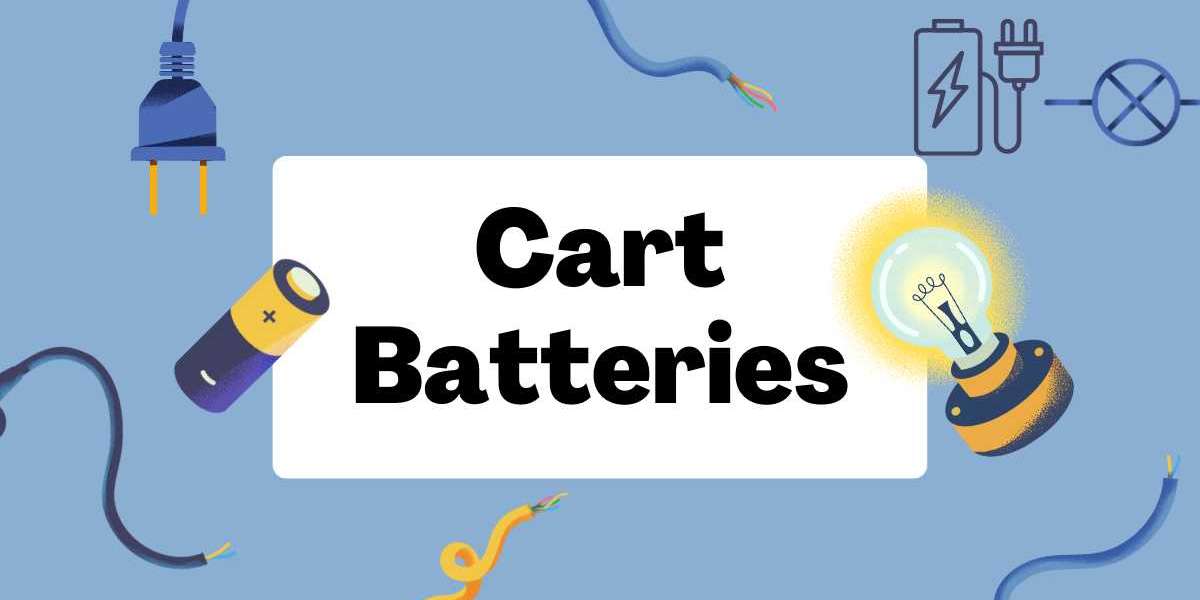Cart batteries play a crucial role in the performance of various vehicles, including golf carts, mobility scooters, and utility carts. Understanding the importance of these batteries can help you make informed choices when it comes to purchasing and maintaining them.
In this guide, we will explore different types of cart batteries, their features, maintenance tips, and much more. Let’s dive in!
What Are Cart Batteries?
Cart batteries are specialized rechargeable batteries designed to power electric carts. They are built to provide a stable energy source for prolonged periods, ensuring that your cart operates smoothly. The most common types of cart batteries include lead-acid, lithium-ion, and gel batteries.
Types of Cart Batteries
Lead-Acid Batteries
- Flooded Lead-Acid Batteries: These are the most traditional type. They require regular maintenance, including checking water levels and cleaning terminals.
- AGM (Absorbed Glass Mat) Batteries: These are maintenance-free and have a lower risk of spilling. They are more efficient than flooded batteries but tend to be pricier.
Lithium-Ion Batteries
- Known for their lightweight and compact size, lithium-ion cart batteries have become increasingly popular. They have a longer lifespan and charge faster than lead-acid batteries.
Gel Batteries
- These batteries use a gel electrolyte, which makes them safer and maintenance-free. They perform well in extreme temperatures but are usually more expensive than lead-acid options.
Choosing the Right Cart Battery
When selecting cart batteries, consider the following factors:
- Voltage Requirements: Most carts require 6V, 8V, or 12V batteries. Check your cart's specifications to determine the voltage you need.
- Capacity: Measured in amp-hours (Ah), the capacity indicates how long the battery can power your cart before needing a recharge.
- Weight: The weight of cart batteries can impact the performance of your cart. Lighter batteries may provide better handling and efficiency.
- Cost: While it’s tempting to go for the cheapest option, consider the long-term costs associated with maintenance and lifespan.
Battery Maintenance Tips for Cart Batteries
Maintaining your cart batteries is vital for ensuring longevity and optimal performance. Here are some essential maintenance tips:
- Regular Charging: Always charge your batteries after use. Avoid letting them fully discharge, as this can shorten their lifespan.
- Check Water Levels: For flooded lead-acid batteries, ensure the water levels are adequate. Add distilled water when necessary, but do not overfill.
- Clean Terminals: Dirt and corrosion can build up on battery terminals. Clean them regularly with a mixture of baking soda and water.
- Store Properly: If you’re not using your cart for an extended period, store the batteries in a cool, dry place and ensure they are fully charged.
Battery Lifespan Expectations
Understanding the lifespan of cart batteries can help you plan for replacements. Here’s a rough estimate of how long different types of batteries last:
- Flooded Lead-Acid: 4 to 6 years
- AGM: 5 to 7 years
- Lithium-Ion: 10 to 15 years
- Gel: 5 to 8 years
The Importance of Proper Charging
Proper charging is essential for maintaining your cart batteries. Using a high-quality charger designed for your specific battery type can prevent overcharging and damage.
As industry expert Jane Doe from Battery Innovations states, “Proper charging is key to maximizing battery life. Investing in the right charger can save you money in the long run.”
Signs Your Cart Batteries Need Replacement
Recognizing the signs of a failing battery can prevent unexpected breakdowns. Here are some indicators that your cart batteries may need replacing:
- Reduced Performance: If your cart struggles to reach its usual speed, it may indicate battery issues.
- Shorter Running Time: A noticeable decrease in how long your cart runs on a full charge is a common sign of battery wear.
- Swelling or Leaking: Physical damage, such as swelling or leaks, can be a sign that your battery is failing and needs immediate attention.
Comparing Cart Batteries
When deciding which type of cart battery to purchase, consider a side-by-side comparison:
| Feature | Lead-Acid | Lithium-Ion | Gel |
|---|---|---|---|
| Lifespan | 4-6 years | 10-15 years | 5-8 years |
| Weight | Heavier | Lighter | Moderate |
| Maintenance | Requires maintenance | Maintenance-free | Maintenance-free |
| Cost | Lower initial cost | Higher initial cost | Moderate |
| Efficiency | Lower | Higher | Moderate |
Frequently Asked Questions About Cart Batteries
1. How do I know which cart battery is right for my vehicle?
Check the specifications of your cart to determine the required voltage and type. Consulting the owner’s manual is often the best place to start.
2. How can I extend the life of my cart batteries?
Regular maintenance, proper charging practices, and using the correct charger can significantly extend battery life.
3. What should I do if my cart battery is leaking?
If you notice any leaks, handle the battery carefully and seek professional assistance immediately. Do not attempt to fix it yourself.
4. Can I mix different types of cart batteries?
Mixing different types of batteries can lead to uneven charging and reduced performance. It's best to use the same type and brand for optimal results.
5. How often should I replace my cart batteries?
Most batteries need replacing every 4 to 15 years, depending on the type and maintenance. Monitor your battery’s performance for signs of wear.
Conclusion
In summary, cart batteries are essential for the smooth operation of electric carts. By understanding the different types, maintenance tips, and when to replace them, you can ensure that your cart runs efficiently for years to come.
Investing in quality cart batteries and following proper maintenance practices can lead to significant savings and improved performance. Remember to stay informed about battery technology and trends to make the best choices for your needs.








